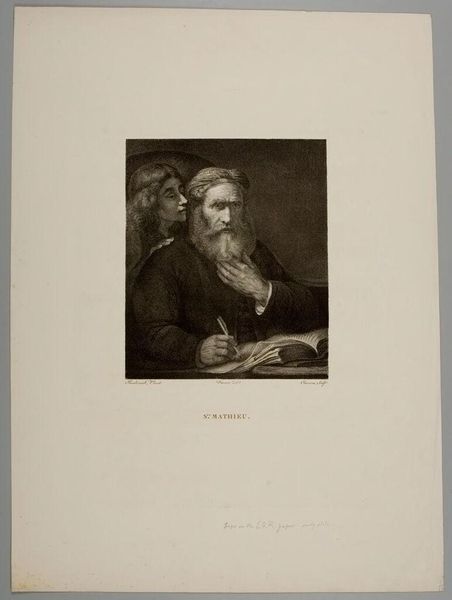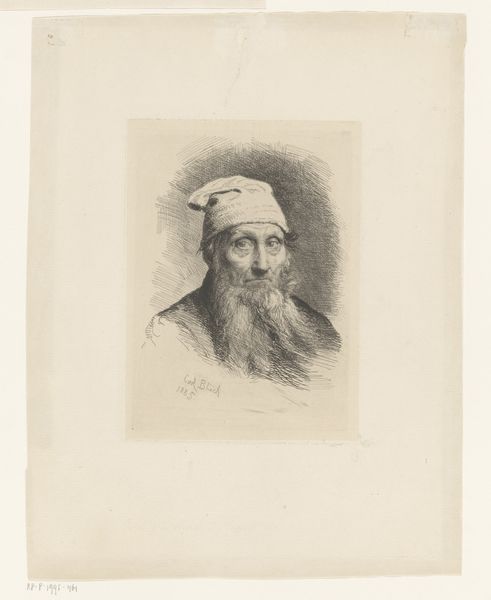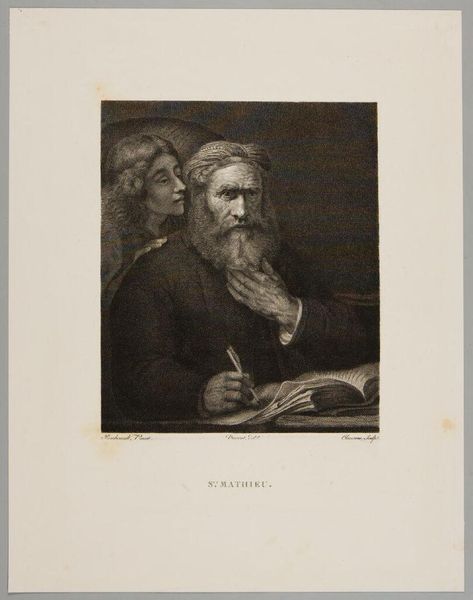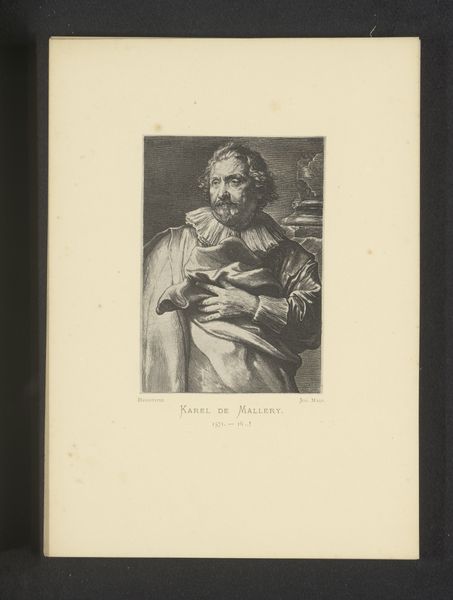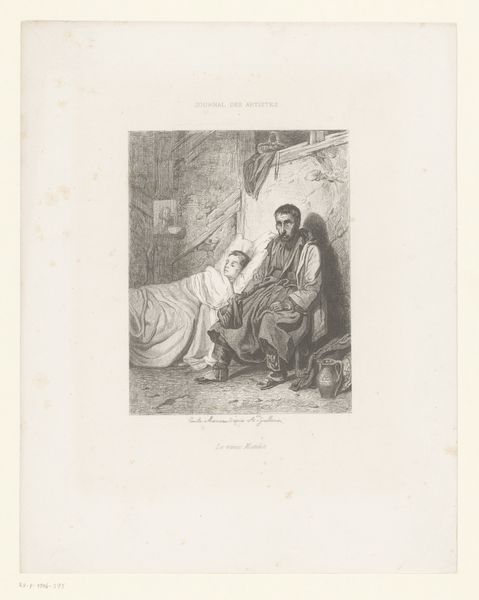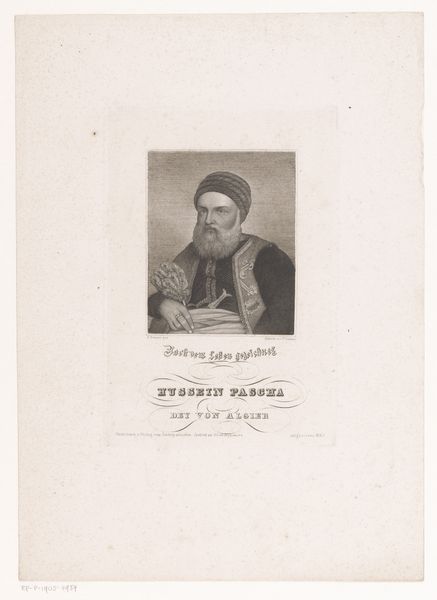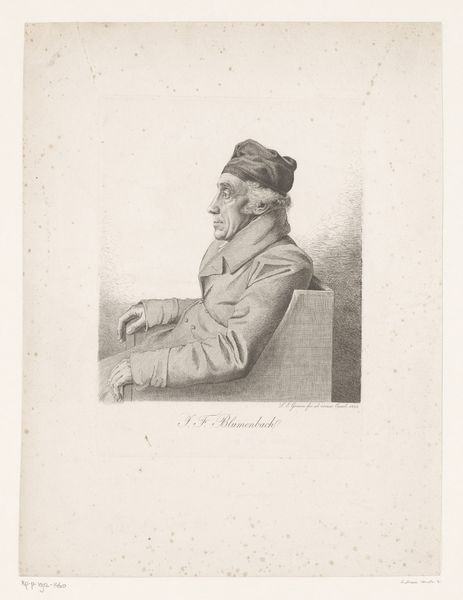
drawing, print, graphite
#
portrait
#
drawing
# print
#
romanticism
#
graphite
#
history-painting
Dimensions: height 404 mm, width 312 mm
Copyright: Rijks Museum: Open Domain
Curator: Immediately I'm struck by how imposing and dignified they appear. Editor: We're looking at a 19th-century double portrait titled "Dubbelportret van Wassili Melko en Michail Alexeieff." It's attributed to Arn. Bouvier, created using drawing and print techniques, primarily graphite. Curator: The rendering in graphite allows for incredibly fine detail, especially in the fur and the faces. But what kind of printing process are we talking about here, since that’s not generally something considered to go hand in hand? It’s like it’s mass-produced yet simultaneously incredibly refined. Editor: Well, that raises interesting questions about artistic accessibility at that time. The printmaking likely served to disseminate the image widely, allowing these figures to gain a degree of notoriety in society, and to increase their audience far beyond the reach of traditional painted portraits. Think of this almost as celebrity image making. Curator: Exactly! It would have given access to these men. And that relates so much to their clothing, to how they represent themselves! This would not be something the typical person might see… The print democratizes that encounter. Look how the clothing speaks to the craftsmanship of its production as well! Fur, textiles… There’s so much manual labor embedded in that portrait, even beyond the artist's hand! Editor: And perhaps also a bit of idealization at play? What was the historical context surrounding these individuals, and why was their image deemed worthy of replication and wide circulation? Their image participates, I suspect, in a broader visual culture tied up with concepts of nationhood, perhaps? And aren’t you struck at how Romantic it is, this yearning for authenticity? Curator: Well, now that you say that, it’s easy to forget they’re not actually present. The materials present a reality that the image itself denies, paradoxically. Editor: Agreed, the intersection of drawing, print, and the circulation of imagery created a powerful dynamic in the 19th century. One that made figures into emblems. Curator: Yes, thinking about the layered construction of the image certainly throws light on those power dynamics at play in portraiture. Editor: I agree; looking at the social context certainly opens new layers of appreciation for its emotional and visual impact.
Comments
No comments
Be the first to comment and join the conversation on the ultimate creative platform.
